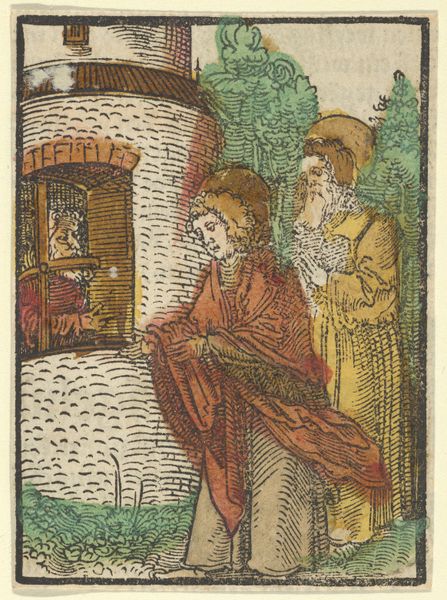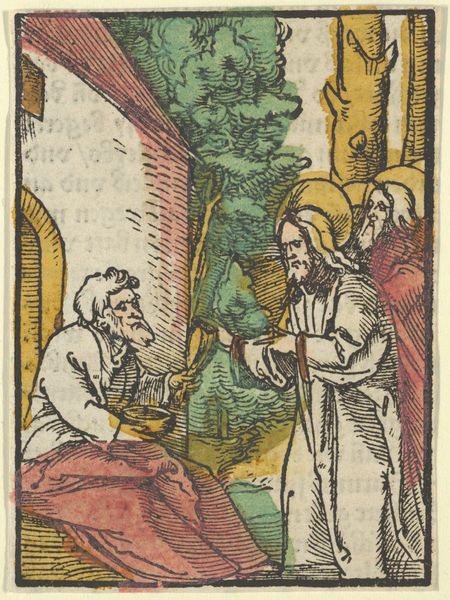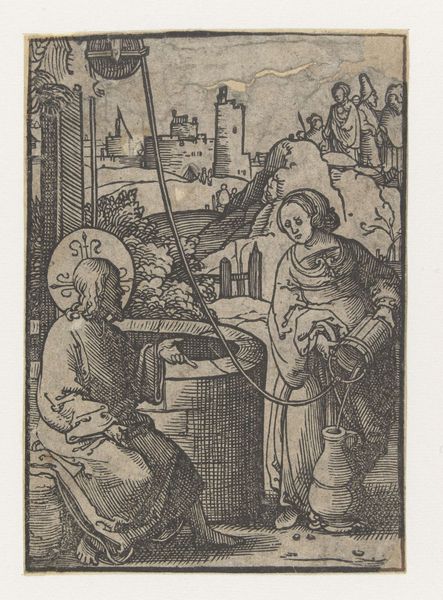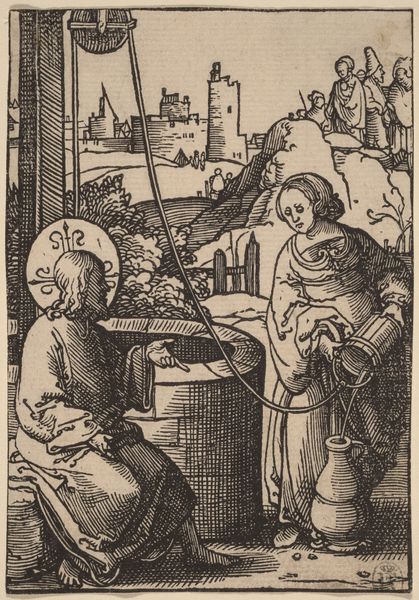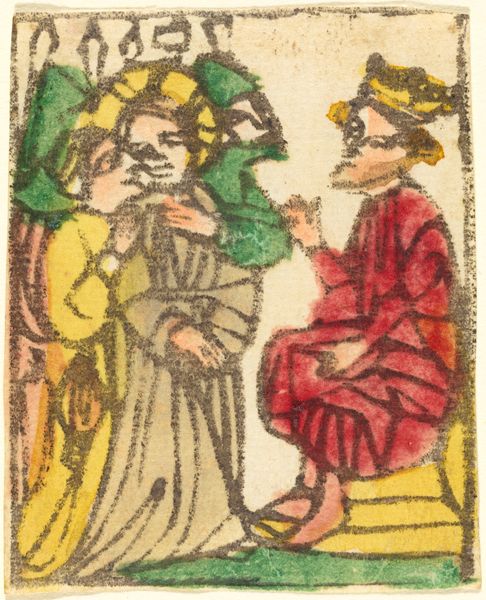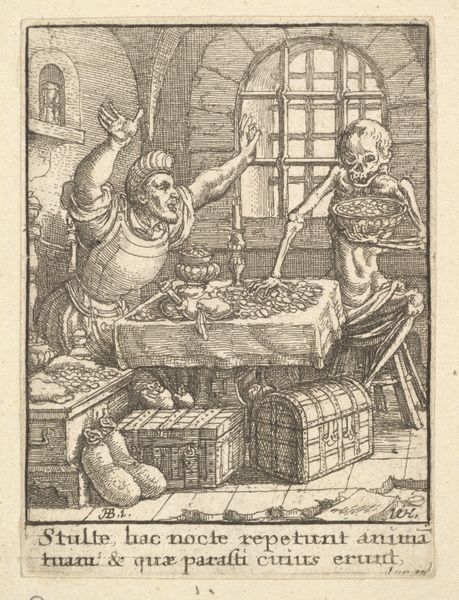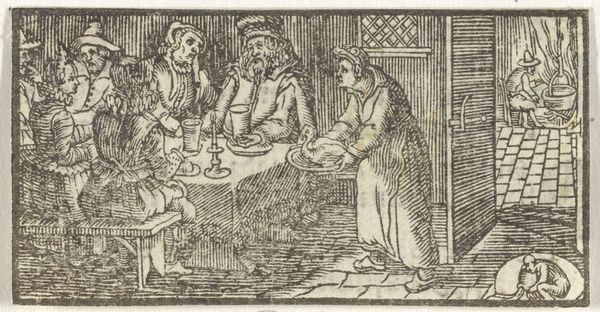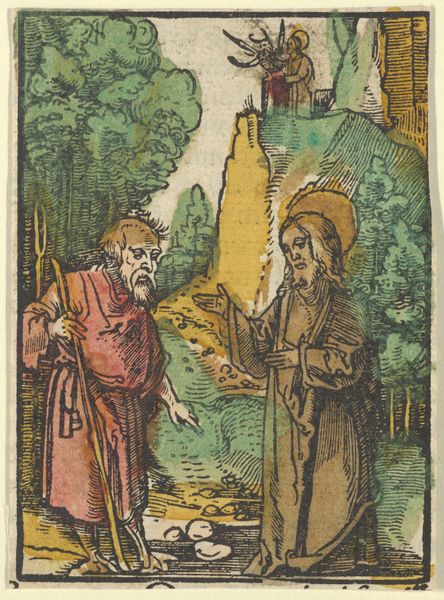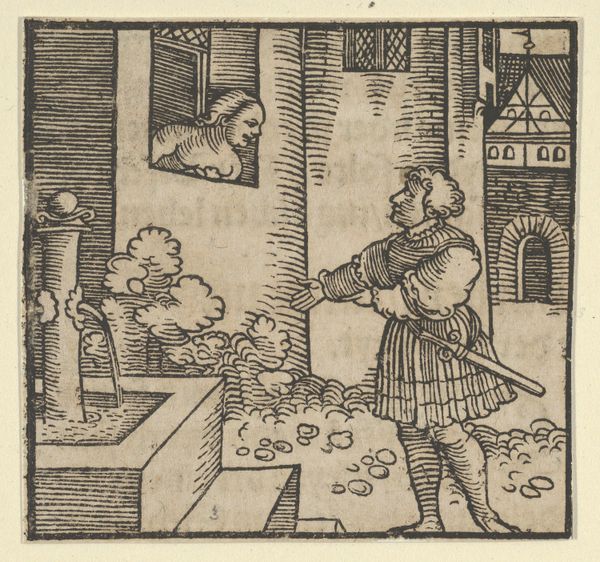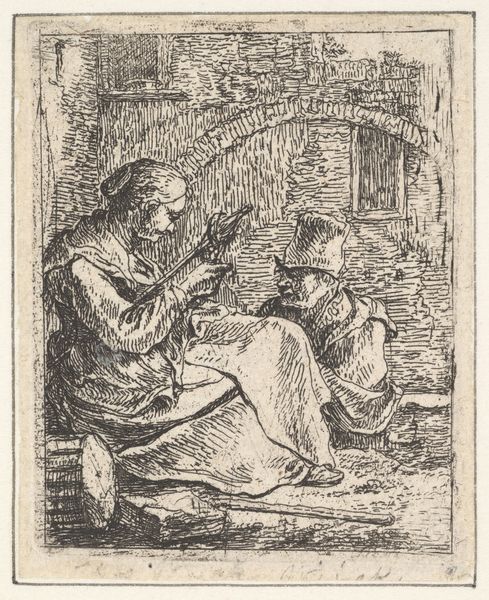
The Parable of the Banquet without Guests, from Das Plenarium 1517
0:00
0:00
drawing, coloured-pencil, print, woodcut
#
drawing
#
coloured-pencil
#
narrative-art
# print
#
coloured pencil
#
woodcut
#
men
#
genre-painting
#
history-painting
#
northern-renaissance
Dimensions: Sheet: 3 11/16 × 2 11/16 in. (9.4 × 6.8 cm)
Copyright: Public Domain
Curator: Look at this woodcut with colored pencil, titled "The Parable of the Banquet without Guests" from Das Plenarium. Hans Schäufelein created it around 1517. Editor: It’s striking how contemporary it feels despite being centuries old. There’s a tension, almost a sense of confrontation, radiating from it. I wonder about the societal dynamics on display. Curator: Schäufelein was a key figure in early 16th-century printmaking, heavily influenced by Dürer. These prints weren't mere decorations; they were vital tools for disseminating religious and social ideas. Think of the woodcut medium itself – relatively inexpensive, reproducible. This made the message accessible to a broad audience. Editor: Absolutely. I see it as a commentary on power, specifically who is invited to participate in the feast, and who is excluded, right? And the level of detail despite being a print! I wonder about the role the workshop played here, because there's a beautiful harmony of textures achieved with colored pencils, and a clear message. Curator: Precisely! Consider the socio-political backdrop: the Reformation was brewing, and these parables were often used to critique societal injustices and moral failings. Editor: And look at the details – the simple food on the table, the robes… everything signals a very specific class dynamic. Were these mass produced, and what would have been the value of this artwork during that period, for the consumer? Curator: They were produced in multiples and value depended on quality of the inking and coloring, and also who was commissioning the series of images from Das Plenarium. Remember, this was pre-photography. Printed images played a crucial role in shaping public opinion and identity, especially during times of religious and political upheaval. It reminds us that art often functions as both a reflection and a catalyst for social change. Editor: It’s incredible to think of this as an early form of mass communication. What a fascinating intersection of material culture, social critique, and artistic skill. Curator: A potent blend indeed. Understanding the mechanics of its production, and how it would've been distributed in society, opens up a deeper understanding of its impact. Editor: Looking at it this way has shifted my perspective entirely.
Comments
No comments
Be the first to comment and join the conversation on the ultimate creative platform.
